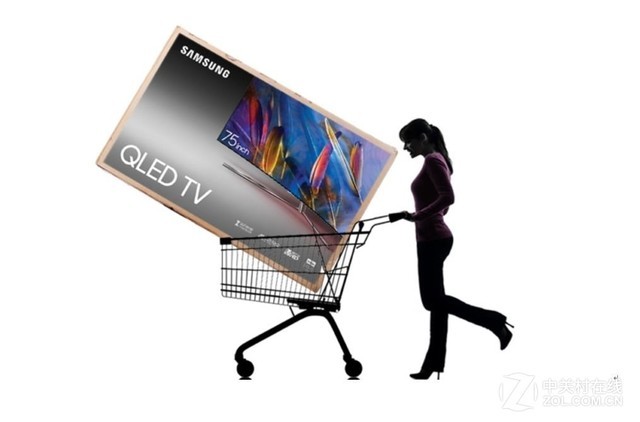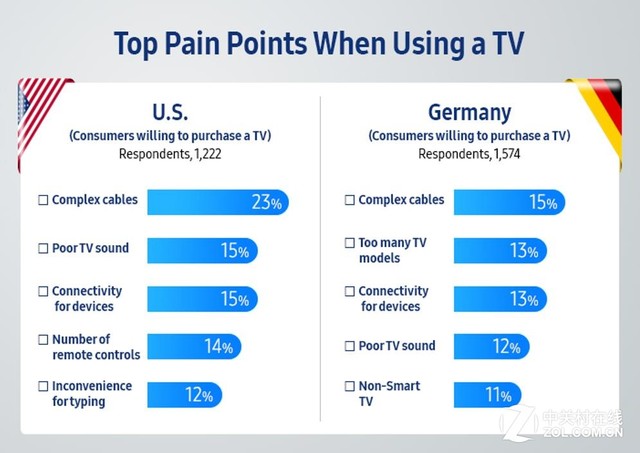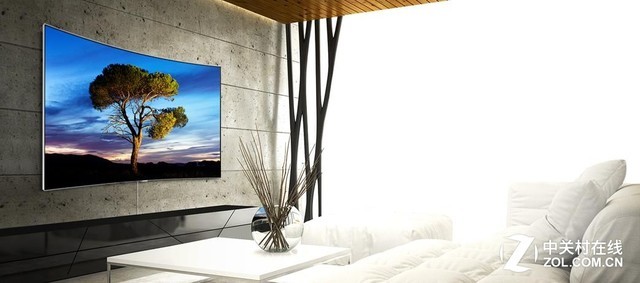From the perspective of the global market, after nearly a decade of rapid development, the television market has been in a slump in the past two years. Taking the Chinese market as an example, in the winter of 2014, when it experienced the first “volatility in price and priceâ€, it has only begun to recover until this year, but it is still difficult. However, under heavy pressure, the development of color TV brands such as Samsung is still remarkable, and high-end performance such as large-screen, ultra-high-definition, QLED has also made considerable progress.
Demand for large screen UHD TV

Data from market research institutes GfK and NPD showed that large-screen televisions larger than 55 inches in January-August 2017 accounted for more than 40% of global sales revenue. 60% of TV sales in North America are large-screen TVs larger than 55 inches, and large-screen TVs with 60 inches or more account for 30% of sales.
In terms of TV resolution, the market is undergoing a transition from Full HD (FHD) to Ultra High Definition (UHD). According to GfK and NPD data, from January to August this year, the sales revenue of ultra high-definition television in the global TV market accounted for more than 50%. In North America, Europe and South Korea, this figure is between 60% and 70%.
Consumers like to use convenient TV
Consumer demand for TV ease of use has not changed. Samsung recently conducted a survey of the television markets in the United States and Germany, and visited more than 1,000 consumers in the two countries who are interested in purchasing new television products. The results showed that 23% and 15% of respondents in the United States and Germany respectively, took the "messy connection cable" as the primary pain point. These interviewees also pointed out that they still have difficulties in using TVs for external device connection, TV screen typing, and smart navigation.

Strong leadership leads global trends
In the aforementioned consumer trends, Samsung has continued to consolidate its leading position in the global TV market. According to GfK and NPD data, from January to August 2017, Samsung accounted for 34% of the global TV market sales revenue, not only for Samsung to dominate the global market, but also to surpass the sum of the second and third market share. . In addition, Samsung has a market share of 42% for 60-inch and larger screen TVs, and UHD TV has a market share of 38%. In terms of television prices, Samsung is also uniquely dominant. It has a 44% share in the US$1,500+ TV market and 37% in the US$2,500+ TV market.
In response, Samsung TV offers a wide selection of large-screen TVs for consumers to choose from. For example, in the QLED TV and high-end UHD TV series, consumers are offered a choice of 65, 75, 82 and 88 inches and equipped with curved surfaces and Flat screen options. Samsung TV accessories have also received wide acclaim, including simple and refreshing Invisible Connection solutions, automatic identification and control functions, automatic detection (AutoDetection), and the ability to remotely control different devices via a single remote control Universal Remote (OneRemote).
QLED TV leads the Chinese market
In 2017, China's color TV market was gloomy and the market scale declined from the first quarter to the third quarter, according to the “2017 three†jointly issued by China Electronics Industry Association and AVC in Beijing in the afternoon of October 25. The “China TV Market Summary Report for the Quarter†shows that the color TV market is experiencing the worst third quarter in history. The retail volume of the TV market in the third quarter was 10.41 million units, down 12.9% year-on-year; the cost pressure and product mix were upgraded, and the scale of retail sales increased year-on-year. 1.3%.
Samsung, with its long-established brand premium, industry leading industrial design and high-definition technology, is in a leading position of high added value, and it meets the increasingly stringent product requirements of Chinese consumers. From high-definition to differentiated industrial design, Samsung is leading the industry: High-definition TVs represented by quantum dots, for example, quantum dot TV sales in the third quarter of this year increased by 24.3% year-on-year, and Samsung in quantum dot TV Market share exceeds 50%; Samsung's leading market share in surface TV remains the top among differentiated industrial design products, with a market share of 9.7%, an increase of 1.7 percentage points; Samsung's flagship non-rimless product share is 4.0%. The growth rate was 2.3 percentage points over the same period last year.

Under the environment of product upgrades in the Chinese color TV market, only high-value-added brands and products can be invincible in the volatile market changes. High added value does not represent huge capital investment, but more time is the quality of time accumulation and the persistent pursuit of technology, which is why Samsung can maintain outstanding performance in the Chinese market.
Yoon Lee, senior vice president of Samsung Electronics Imaging Display Division, stated that “With the significant growth in QLEDTV sales in the second half of this year, Samsung’s leading edge in the high-end TV market will continue to expand. Samsung’s business strategy meets the rapidly changing needs of global consumers. The future will surely continue to lead the development of the global TV market."
Shenzhen Xcool Vapor Technology Co.,Ltd , http://www.xcoolvapor.com
